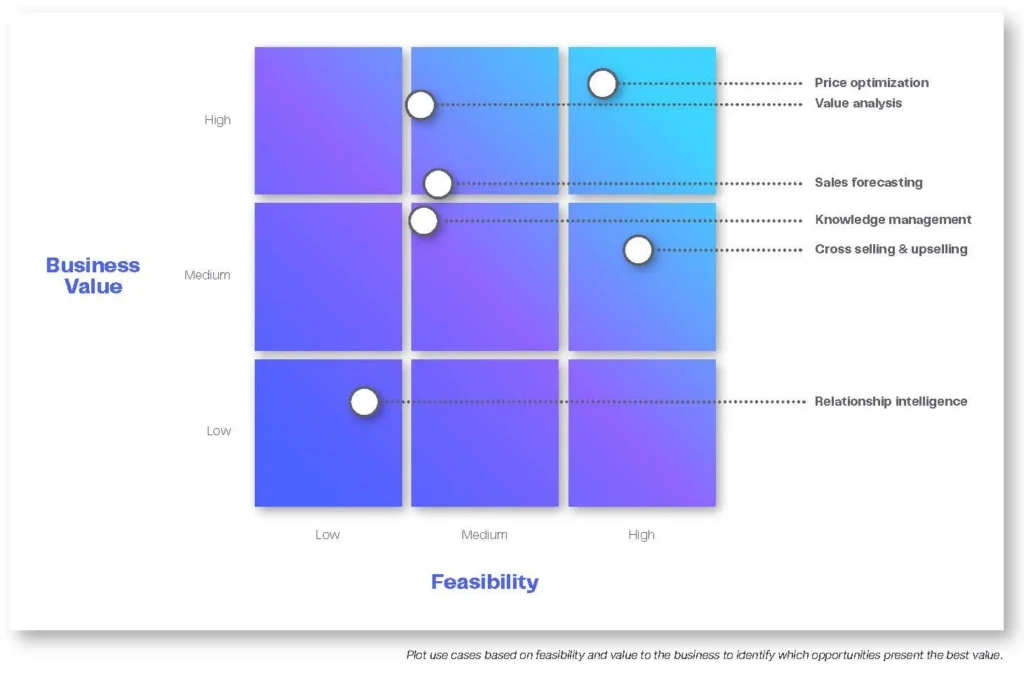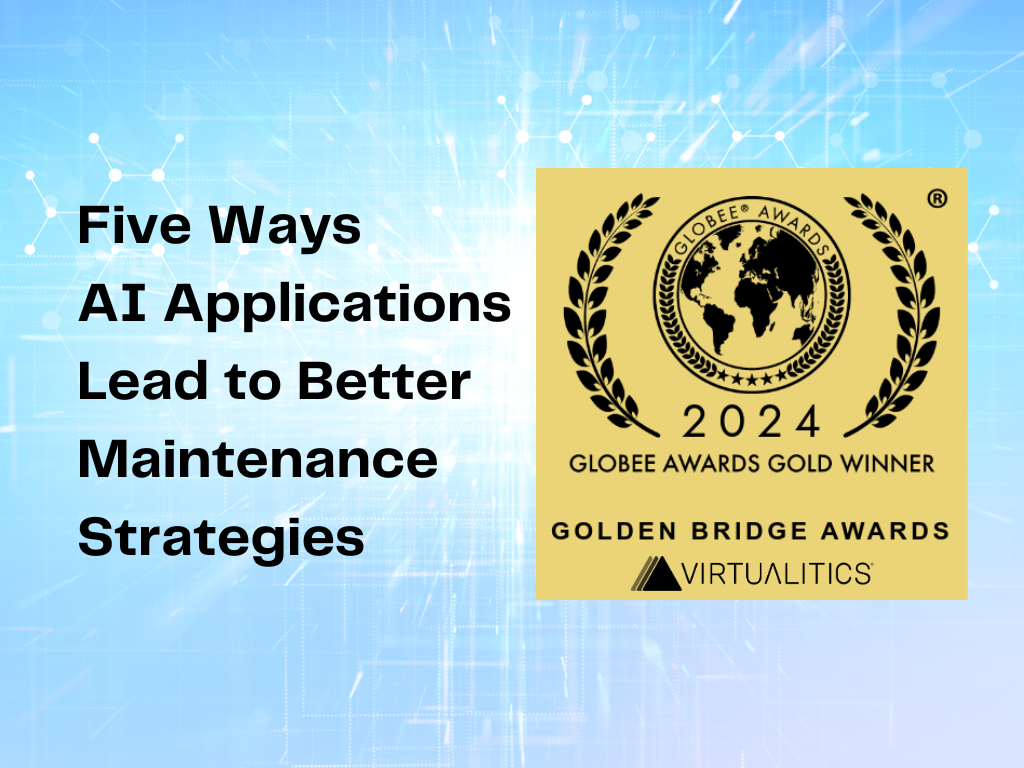Multitasking? Great! You can listen to this blog post by clicking above or find our podcast, Intelligent Data Exploration, on major podcast platforms.
AI is on the brink of becoming mainstream, but many organizations aren’t even attempting to use AI yet. Where does your team fall on that spectrum?
No matter where you are on the AI maturity curve—just getting started or preparing to dive deeper—our experience has shown that there are nine steps to creating a successful AI strategy.
Those nine steps can be divided into three parts.
Part I: Explore & prepare
- Explore
- Identify & refine
- Define
- Prepare
Part II: Develop
- Test & monitor
- Model Selection
Part III: Deploy
- Deploy
- Adopt
- Assess
Getting started on the journey to making AI an embedded part of your business’s strategy is easier than you think. Let’s look closer at each step to see how you could be building your AI strategy.
Part I: Explore & Prepare
1. Explore
Thorough data exploration is the foundation of every choice, strategy, and initiative that your business takes on. You owe it to your teams and your stakeholders to make sure you understand the insight in your data before taking action.
Full data exploration allows us to understand the real challenges in our business, as well as how multifaceted those challenges are. Exploration leads teams to see the connections between data and the drivers influencing their business.
If you don’t have the resources or experience on your team to explore your data thoroughly with traditional BI tools then it’s time to get better tools. Virtualitics’ Intelligent Exploration uses AI to explore all the relevant data across more dimensions, without bias, and surface explainable insight.

2. Identify + Refine
This next phase builds on the foundation that you built in Explore, digging in to identify key drivers and refine your insights. This step includes:
- Reviewing and prioritizing findings with subject matter experts and stakeholders
- Creating a prioritized shortlist of the possible issues to address, considering both the level of effort and level of impact
- Determining the appropriate solution for the highest priority issues
A solution should also be tailored to the problem. While AI is ideally suited to search through your data to find root causes, it can also forecast possible scenarios and discover patterns in data that will help you select the best solution for each issue. The logical next steps could also include reports, dashboards, or process changes that help teams manage the problem you’re focusing on.
3. Define

Exploring data before identifying and refining potential solutions means that your project definition phase is focused on the right opportunity. With the information already learned, teams go into project scope definition with a clear view of the drivers, outliers, and trends in their data that are impacting the challenge they want to address.
Project definition is all about defining what your solution is, how you’re going to build it, what deployment will involve, and what you expect the business impact to be. Impacts will hopefully be mostly positive, like increased productivity, but you must also consider the effort and expense of process changes and adoption.
You’ll need to prepare a business case that defines the scope and value of the effort, and gets executive buy-in. Your business plan might include visuals like network graphs, projections, definitions of success, and a clear schedule of next steps. If your solution includes an AI model, you’ll also define the targets and evaluation metrics for your model. Virtualitics’ Intelligent Exploration automatically identifies good targets for AI modeling and provides appropriate evaluation metrics for KPIs, so teams can clearly identify how they will measure the success of their efforts.
You may get through this point and determine that the cost of moving forward with any change is not worth the impact that it will have on the problem. That does not mean that you failed! In fact, it shows the value of the process that you have learned enough to know not to waste resources on something of little to no value.
4. Prepare
If your solution includes an AI model or a dashboard, you’ll need to prepare your data so that it’s ready to be fed in. The more you can automate loading data, the more frequently you can refresh your data—frequent updates ensure that your model or dashboard is leveraging the most current data. Because data typically comes from multiple sources it is also likely to be in different formats that need to be reconciled to work together.
Part II: Develop
If you are moving forward with an AI project, part II of the process is actually developing the model based on all of the groundwork that you’ve done up to this point.
5. Model Selection
To be truly effective, AI models need to be able to grow with your business. Iteration is a vital part of selecting the right model for deployment.
Selecting and developing models is based on the problem to be solved and the data available. Teams may need to deal with issues like missing values, anomalies, and other data-cleansing activities. Data scientists who understand their datasets can choose models that can deal with missing values, or clean the data prior to incorporating it into the model. Iteration is also necessary to select the best model, which is much easier to accomplish with AI to help.
6. Test and Monitor
Once a model is deployed it must be monitored and validated. That includes backtesting, checking out-of-sample data, and investigating forecasts from the model by comparing it to a trusted benchmark.
The remaining steps are applicable to both AI and non-AI solutions.
Part III: Deploy
Having taken the necessary steps to create a solution that’s solving a real business problem, and with the buy-in from stakeholders, you can deploy your solution with confidence.
7. Deploy
Deploying a solution means getting your solution into the hands of the people who will use it. This process will vary depending on the nature of the solution but should include champions in the business and in IT solutions who can help teams successfully put the solution into practice.
8. Adopt
The benefits of a strategic solution cannot be realized if the solution isn’t adopted by the applicable users. Adoption best practices include:
- Explaining how the solution will have a positive impact at all levels of the organization
- When and how the solution should be used
- How you’ll monitor the solution
- How you’ll measure the success of the solution
You can help build confidence in solutions by including visuals that explain how the AI works in a way that is easily understood by all end-users.
9. Assess

A solution needs to be measurable, so teams know if and how they should adjust it. Key performance indicators and other metrics like financials, technical cost, and risk level can also be used to determine success and validate next steps.
Building a Successful AI Strategy
When teams follow these steps, building on a strategy of exploration and insight, they can create a sustainable AI strategy that will support business transformation and growth. They can confidently promote innovation, define solutions, and monitor them for success. For more details on these steps, you can download our e-book Building a Sustainable AI Strategy from the Ground Up.






